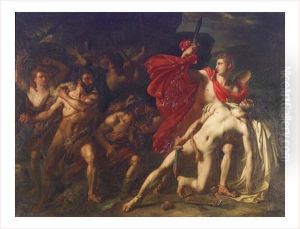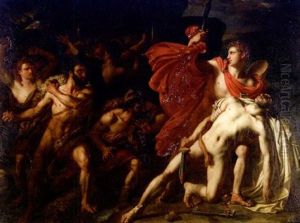Jean-Joseph Dassy Paintings
Jean-Joseph Dassy was a French painter born on December 25, 1791, in Marseille, France. He was an academic artist who specialized in history painting, religious scenes, and portraits. Dassy was trained at the École des Beaux-Arts in Paris, where he was a student of the renowned painters Jacques-Louis David and François-André Vincent. His classical training under these masters greatly influenced his style, which was characterized by its adherence to neoclassical principles of clarity, order, and harmony.
Dassy's career was marked by his dedication to history painting, a genre that was highly regarded during his time. His works often depicted moments from ancient history, biblical narratives, and scenes from classical literature. In addition to his history paintings, Dassy was also known for his religious works, which were commissioned for various churches in France. His paintings were recognized for their meticulous detail, use of vibrant colors, and the ability to convey a sense of drama and emotion.
Throughout his career, Dassy exhibited his work at the Salon, the official art exhibition of the Académie des Beaux-Arts in Paris. He gained recognition and accolades for his paintings, which were appreciated by both critics and the public. Dassy's contributions to French art were recognized when he was awarded the Legion of Honor, a prestigious French order established by Napoleon Bonaparte.
Jean-Joseph Dassy continued to paint and contribute to the French art scene until his death on June 7, 1865, in his hometown of Marseille. Today, his works can be found in various museums and collections in France, serving as examples of the neoclassical tradition in French painting during the first half of the 19th century.

